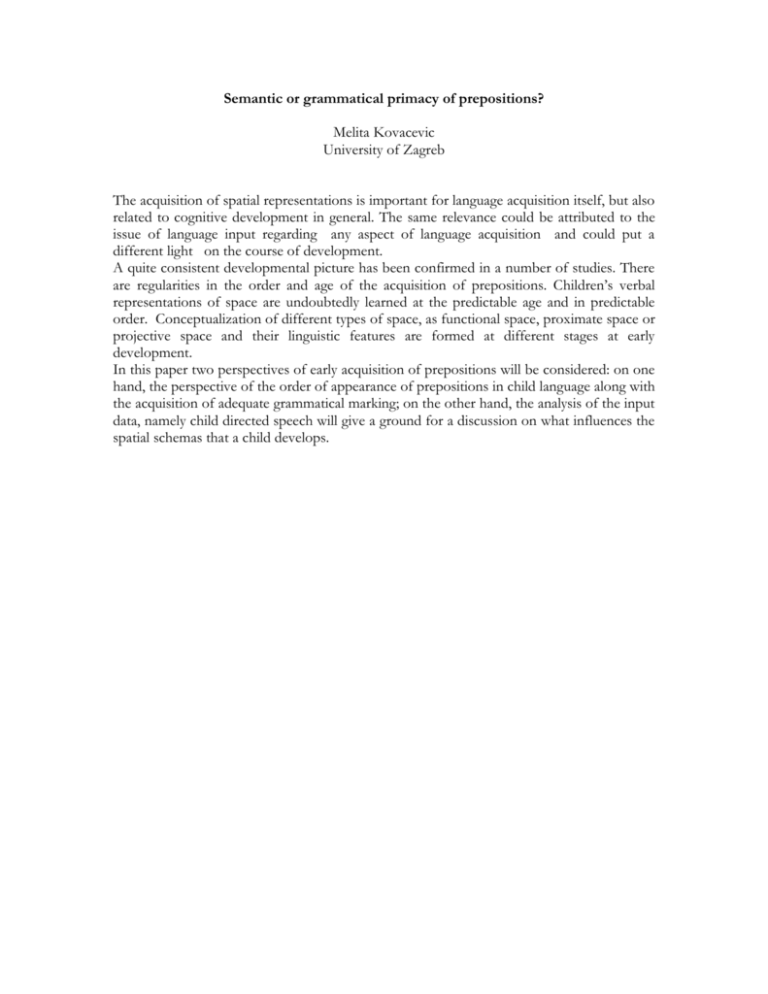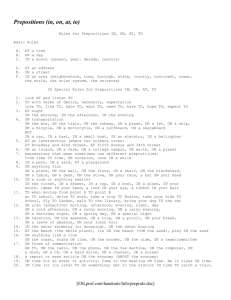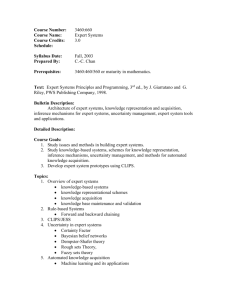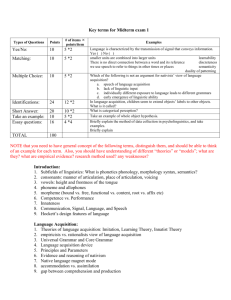Semantic or grammatical primacy of prepositions
advertisement

Semantic or grammatical primacy of prepositions? Melita Kovacevic University of Zagreb The acquisition of spatial representations is important for language acquisition itself, but also related to cognitive development in general. The same relevance could be attributed to the issue of language input regarding any aspect of language acquisition and could put a different light on the course of development. A quite consistent developmental picture has been confirmed in a number of studies. There are regularities in the order and age of the acquisition of prepositions. Children’s verbal representations of space are undoubtedly learned at the predictable age and in predictable order. Conceptualization of different types of space, as functional space, proximate space or projective space and their linguistic features are formed at different stages at early development. In this paper two perspectives of early acquisition of prepositions will be considered: on one hand, the perspective of the order of appearance of prepositions in child language along with the acquisition of adequate grammatical marking; on the other hand, the analysis of the input data, namely child directed speech will give a ground for a discussion on what influences the spatial schemas that a child develops.











